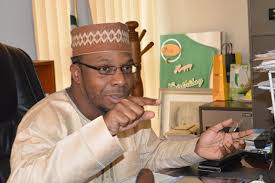The prolonged recessionary trend of the nation’s economy has taken a big toll on the human capital development index, with the combined unemployment and underemployment rate rising from 37.2 per cent in the second quarter of this year to 40.0 per cent in the third quarter.
The latest report of the “Unemployment and Under Employment Report from 1st Quarter to Third Quarter 2017’’ by the National Bureau of Statistics (NBS) published on Friday indicated that the number of people within the labour force who were unemployment or underemployment increased from 13.6 million and 17.7 million respectively in Q2, 2017, to 15.9 million and 18.0 million respectively in the third quarter of this year.
Analysing the labour market trend further, the Bureau disclosed that the unemployment rate rose from 14.2% in Q2 to 18.8% in Q3,2017.
The official statistics reporting agency disclosed that Nigeria’s labour population increased from 83.9 million in the second quarter to 85.1 million in the third quarter of 2017, while noting that that the total number of people in full-time employment (at least 40 hours a week) declined from 52.7 million in the second quarter 2017 to 51.1 million in third quarter.
The Bureau stated that unemployment rate increased from 14.2 per cent in the Q4 of last year to 16.2 per cent in second quarter 2017 and 18.8 per cent in the third quarter, 2017.
A further decomposition of the labour force market trend on gender basis by the NBS indicated that during the third quarter of 2017, 21.2 per cent of women within the labour force (aged 15-64 and willing, able and actively seeking work) were unemployed, compared with 16.5 per cent of their male within the same period.
Linking the recession of the economy to the growing unemployed and underemployed market, the Bureau pointed out that Nigeria’s economic growth had been decelerating since second quarter, of 2014, culminating in an economic recession in second quarter, 2016.
While noting that the economic recession was technically over in second quarter of this year, the agency stated in the report that several economic activities were still contracting or recovering sub-optimally.
It projected that the implications of the recent reversal of the prolonged recession in the nation’s labour market may stimulate improved employment effective from 2018, if all other growth-stimulating factors are properly monitored and managed.




